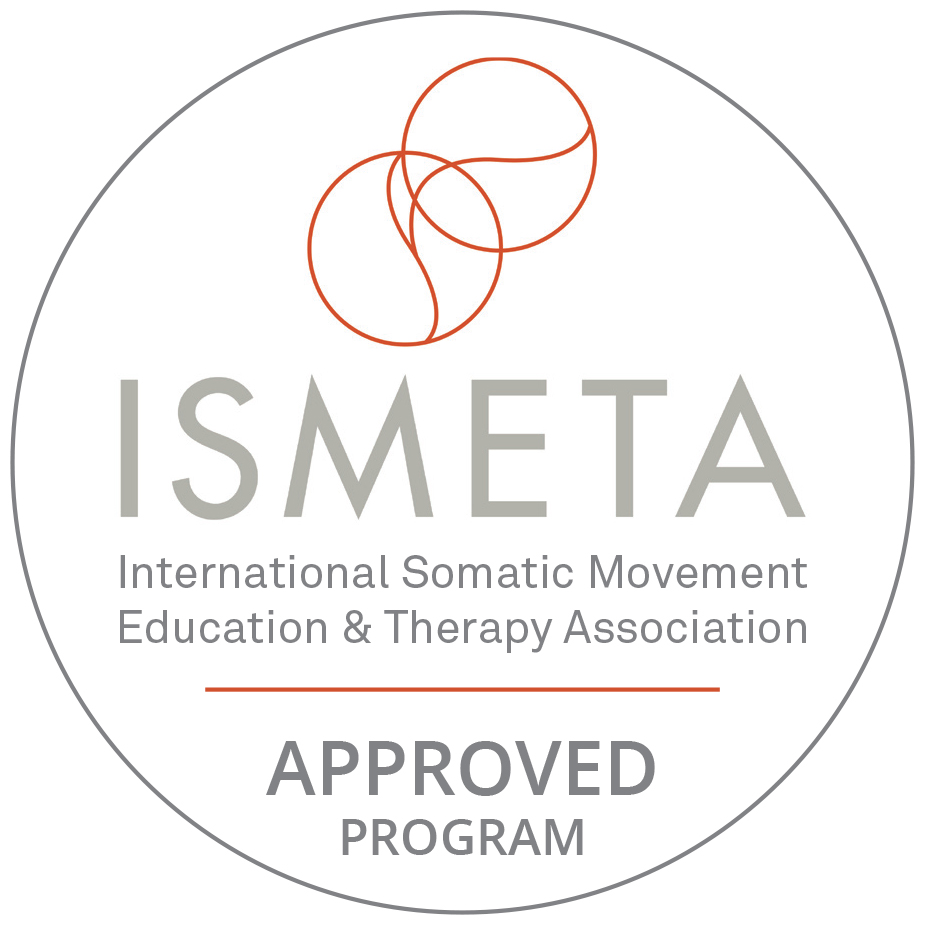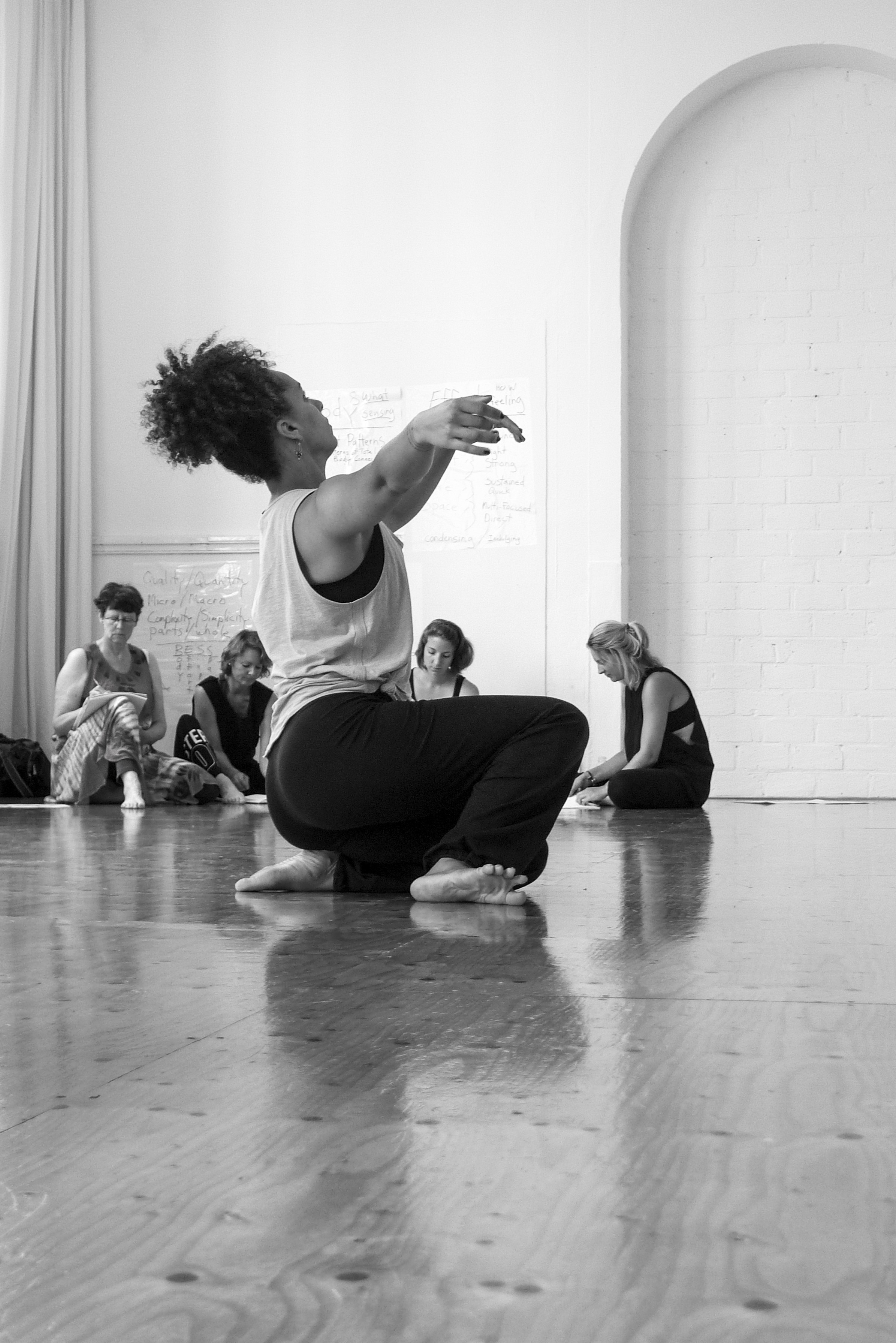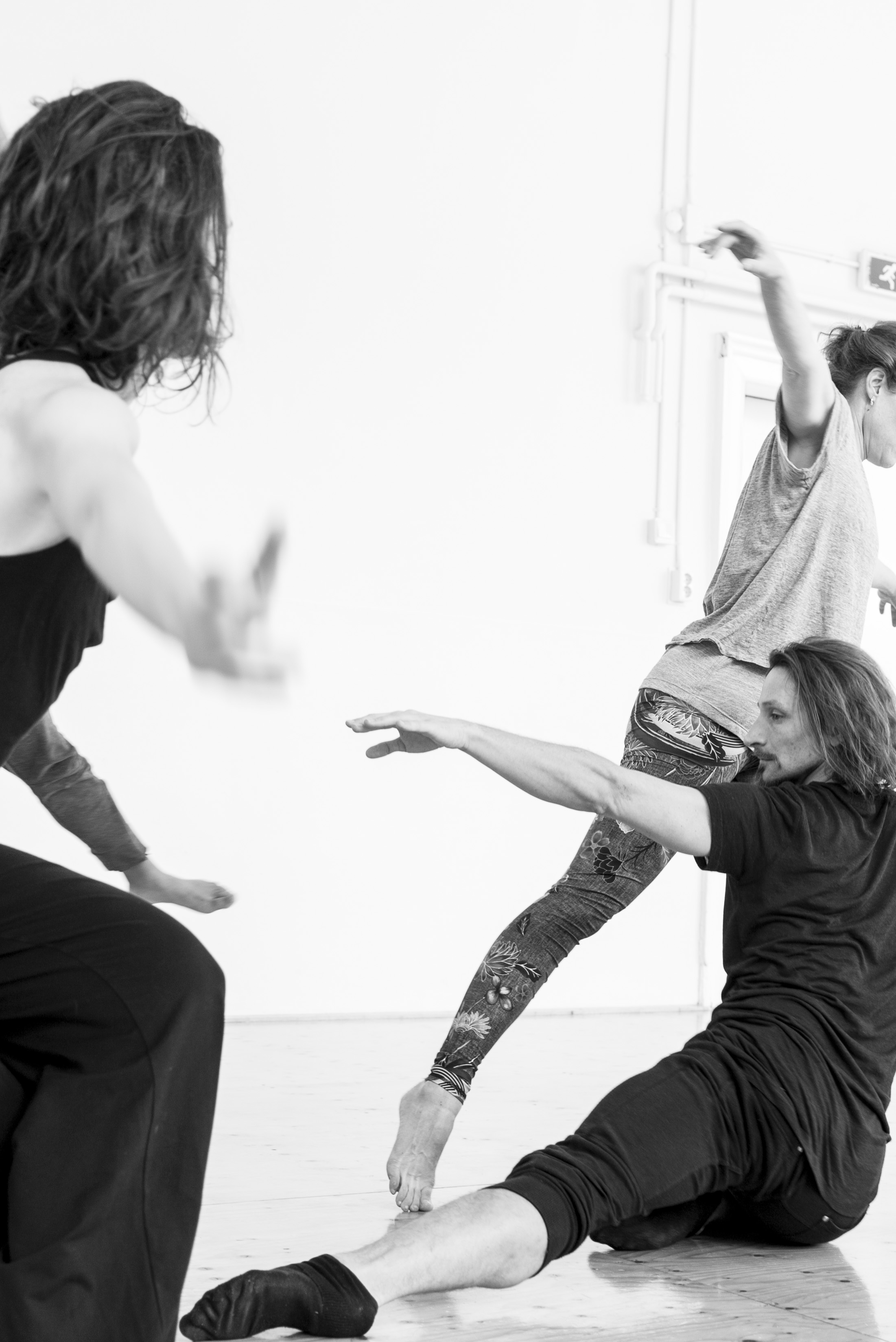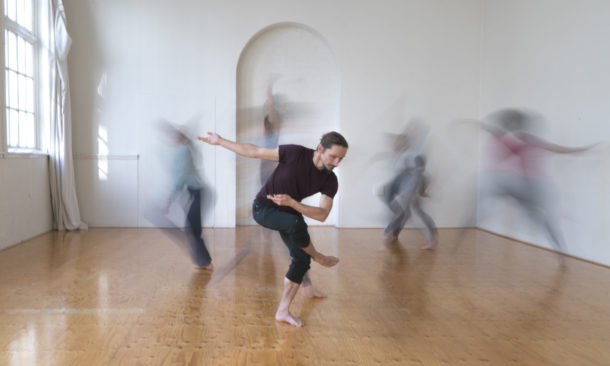EMOVE
Certification Program
The LBMS Certification Program is taught using a range of learning and teaching methods including: experiential, theoretical and practical seminars.
As a somatic movement education program, this course follows a developmental progression through the structure of the curriculum. Over the course of the nine modules students will be guided to develop a deeper understanding of self, other and community through the the processes of perceptual awareness, analytical observation, repatterning and intervention
EMOVE’s program in LBMS is a certified education. Participants successfully completing the entire program and certification requirements will receive the certification designation LBMA: Laban Bartenieff Movement Analyst.
We are happy to announce that our program maintains the high standards of an Approved Training Program of the International Somatic Movement Education and Therapy Association (ISMETA). Our graduates meet all requirements to become Registered Somatic Movement Educators (RSME) and Therapist (RSMT). For more information: www.ismeta.org
This education is everything I was hoping for and more. It is a safe space in which I can discover the journey to more awareness of my own bodily knowledge, to learn and increase my awareness on all things related to Movement. This relates to the functionality of the Body and journeying to finding more ease, learning about the spaces in which we move and delving into the world of space harmony and becoming conscious about the varying qualities that make-up movements invting uniqueness, difference allowing for more conscious choices. The education is facilitated by sensitive and generous educators who have a wealth of experience in LBMS.
As a student – thanks to the supervision of inspiring teachers – I experience a deepening of my body awareness. I get to understand my own movements better and as a result also the movements of others. As a teacher and choreographer I experience being able to do my work more precisely substantiated with relevant LBMS components as well as that I started to teach more somatically.
Where we as humans are being pushed more and more into our heads by the digital revolution, and are getting further and further away from our bodies and its movement, the LBMS has a special task for the future. The LBMS brings us back to our bodies and to our total person in space. LBMS is about movement, how I move, what I move and where I move in all its facets. By looking at movement from these different angles, we gain more insight into the moving body and the space around it. This gives us more room to move and improves our overall wellbeing. For me personally, the group of LBMS has become a new family, moving together, discovering and growing!
Goals
EMOVE’s training program provides students with a large set of comprehensive movement analysis skills. These skills are framed through conscious awareness of oneself and others in relation to the context of action in the environment.
Movement plays a profound role in functional and expressive aspects of human experience. We identify movement as a foundational body of knowledge. This awareness leads to developing specific skill sets to give trainees the capacity to unpack the complexity of human movement. Understanding the parts in relationship to the whole – gives students the ability to discern patterns of movement.
Identifying patterns in self and other sets the stage for optimizing the potential of movement and creating possibilities for change through repatterning.
Having a clear and specific vocabulary for movement and a framework to observe the patterns of movement provides an incredible tool for all those interested in teaching movement skills, repatterning movement and for exploring new movement options.
The program’s goals are not exclusive to one application or specified outcome. The training provided and skills practiced are meant to be equally useful for a dance therapist, or for someone working in the field of robotics or for someone seeking to refine their skills in coaching.
Skills
Observational skills – distilling what is essential and how the parts relate to the whole of movement within a context.
Improvisational Skills – choice/ interaction/ drawing from and honing intuition
Movement Skills including :
- Breath Support
- Flow and Weight sensing as the baseline the foundations of self/other and the personal linked to the universal
- Identifying and accessing the Patterns of Body Organization
- Dynamic range (Effort)
- Interaction including: Hands on Skills – touch
- Space Harmony mapping our kinesphere and accessing the continuum of Inner to Outer Space
- Access to Phrasing
- Using the support of Shape (the Body Space relationship)
- Voice and Movement Verbal/Nonverbal connection
- Using Bartenieff Fundamentals for diagnosis and for intervention




